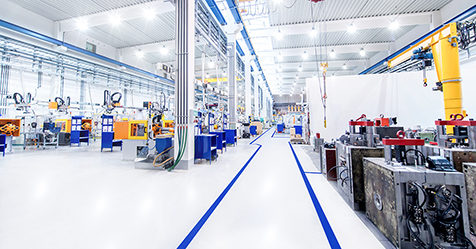Disinfection efforts directly affect the health and safety of a building’s patients, visitors, and employees, and it’s critical that facility managers continue to reevaluate, audit, and revise their infection prevention plan.
Flooring is one surface that health care facility managers should consider adding to their infection control plan. Although it may seem like a no-brainer, in many situations, floor disinfection is a priority. Instead, some facility managers view floor disinfection as a wasted effort, believing the result does not justify the costs associated with product and labor.
Today, the industry standard for floor disinfection is changing due to a growing awareness of the harmful bacteria that can be found on floors and its potential to spread to other high-touch areas via shoes, hands, or equipment that might roll through. As a result, facilities such as hospitals increasingly rely on floor disinfection procedures to mitigate adverse effects on patients as well as the costs associated with dangerous pathogens.
High-foot traffic shouldn’t keep cleaning teams or managers from properly disinfecting floors. By following these strategies, every facility can create a disinfection program that is both functional and effective.
Acknowledge Floors as a High-Touch Surface
It’s common for cleaning staff to prioritize the disinfection of soap dispensers, railings, door knobs, and countertops as they are more obvious high-touch surfaces that invite frequent contact from hands. However, floors need the same attention. There are countless ways a floor can become contaminated, including exposure to the bottom of shoes, placement of bags that have been on other surfaces, patient-room spills, and residual airborne bacteria.
Often lying undetected, it’s important to identify how germs transfer from the floor to other critical surfaces. For example, wheelchairs are a prominent source of cross-contamination in health care facilities, according to a study from the World Journal of Microbiology and Biotechnology. Ultimately, a patient’s hands will touch everything the wheels pick up as they move throughout the room, bathroom, or corridor, causing the potential spread of harmful germs or superbugs. Visitors can also spread germs when handbags or other personal items are placed on the floor and then moved to a table or other high-touch area.
Although these are two common contributors to cross-contamination, it’s important to remember that pathogens transfer through the air and by contact. In consequence, even though floors aren’t typically considered a high-touch surface, it’s still a potential hotbed of bacteria if not properly disinfected.
Start Off on the Right Foot
There are core steps and products that can provide optimal disinfection results, and cleaning is an important first step in the process. Dusting and the removal of dirt and debris is critical to any floor cleaning routine as it removes dust particles that can host harmful bacteria. When selecting a dusting product, facility managers should choose a tool that traps dirt, dust and hair as opposed to products that simply redistribute debris. In addition, choosing a dusting product that is double-sided will promote greater efficiency.
Disinfect After Cleaning
After the floors have been cleared of dust, dirt, and debris, cleaning professionals are clear to disinfect. Product selection for disinfection is crucial, as it impacts the safety of your building’s visitors. Below are best practices to consider when making product decisions.
- Reduce contact time. Choose a chemical concentrate with a shortened dwell time to minimize obstruction in high-foot traffic areas.
- Ensure chemical accuracy. Using the right amount of chemicals is important to ensure proper cleaning, disinfection, and sanitizing of surfaces. Mopping systems that feature a chemical dispenser provide more control by accurately applying disinfectant to the floor.
- Consider disposable options. Launderable mop pads can harbor the dangerous bacteria that contributes to cross-contamination. Using disposable mop pads will help reduce the cross-contamination of bacteria on facility floors.
- Alleviate cleaning fatigue. Physical strain is a concern for any task requiring high repetition. Use a mopping system with ergonomic features to help alleviate cleaning staff fatigue.
Create a New Mindset for Maintaining Safe Floors
Health care facilities have a duty to protect their patients, and floor disinfection is a proven infection prevention tactic. However, any facility that hosts visitors bears a responsibility to keep a safe and clean environment that limits the spread of germs, especially during flu season.
An effective floor cleaning and disinfecting program will incorporate the above strategies to produce a surface that is absent of both dirt or debris as well as bacterial contamination. Ultimately, safe floors are not just unobstructed pathways or covered with antislip materials. Instead, a new way to approach floor safety is through the lens of disinfection.




